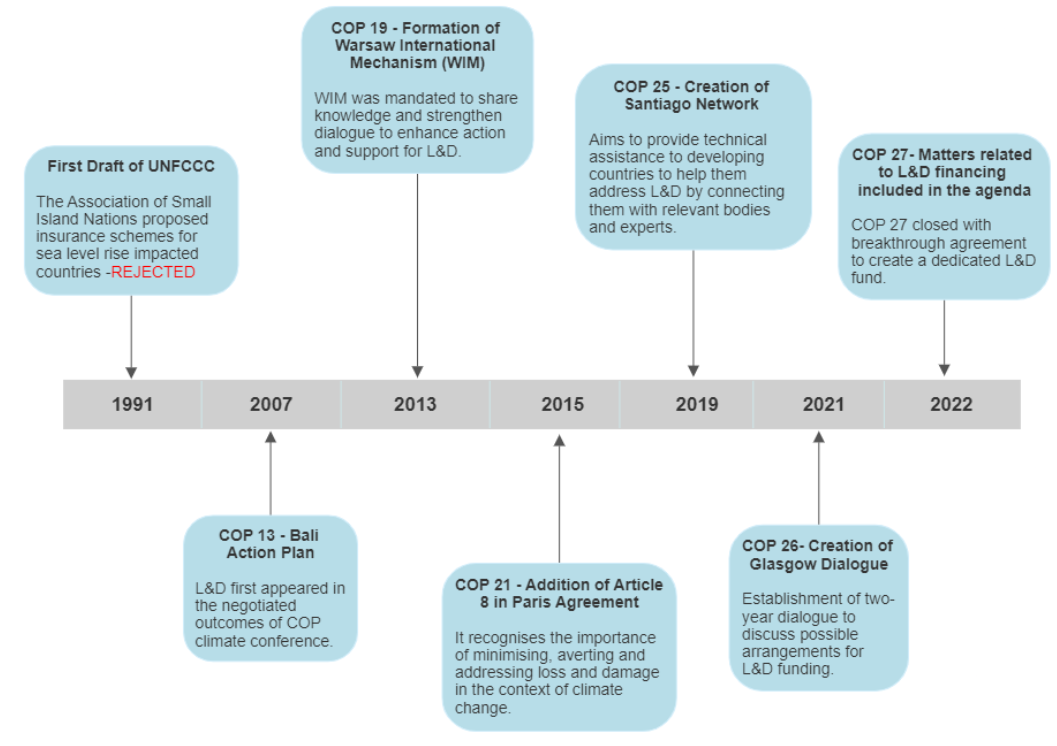Context
Human-induced climate change has raised the average global temperature by 1.1°C above pre-industrial (1850-1900) levels1. This is leading to an increase in the frequency and intensity of extreme climate events, such as heatwaves, storms, droughts, hurricanes, and floods. In addition, climate change is causing slow-onset phenomena such as sea-level rise, acidification of oceans, biodiversity loss, and desertification (ibid).
The Paris Agreement, adopted in 2015 under the United Nations Framework Convention on Climate Change (UNFCCC), aims to limit global temperature rise to well below 2°C above pre-industrial levels and pursues efforts to limit the temperature increase to 1.5°C. To achieve this goal, countries are implementing a range of mitigation and adaptation activities.
Mitigation activities are actions taken to reduce or prevent the emission of greenhouse gases by transitioning to clean energy, improving energy efficiency, and expanding forests that remove carbon dioxide from the atmosphere2. On the other hand, adaptation involves taking steps to prepare for and reduce vulnerability to the negative impacts of climate change by taking steps such as establishing early warning systems (EWS) for cyclones, improving water management systems, and transitioning to drought-resistant crops (ibid).
However, current global efforts to reduce greenhouse gas emissions and adapt to climate change are insufficient to address adverse climatic effects3. As adaptation measures fall short, some of the adverse effects will inevitably materialise. This is known as loss and damage4.
What is loss and damage?
As per the UNFCCC, loss and damage refers to the adverse effects of both extreme climate events as well as slow-onset phenomena that affect human society and the environment – effects that occur in spite of mitigation and adaptation measures2. The Intergovernmental Panel on Climate Change (IPCC) defines loss and damage as the negative consequences of climate change that go beyond the limits of adaptation, including impacts on human health, livelihoods, and assets4.
Loss and damage can broadly be categorised as economic and non-economic4. Economic loss and damage can be quantified in monetary terms, such as the amount necessary to rebuild infrastructure damaged because of a flood or hurricane or revenue losses due to crop destruction because of droughts or floods5. Economic losses are estimated to rise to USD 290–580 billion annually by 2030 and USD 1 trillion annually by 20506.
Non-economic losses refer to intangible impacts that cannot be quantified in monetary terms, such as loss of access to land, loss of cultural assets and indigenous and local knowledge, and damage to biodiversity5.
To effectively address these impacts, the IPCC recognises the need to focus on loss and damage as a separate and distinct aspect of the global response to climate change4. The IPCC also highlights the importance of financing in the context of loss and damage to support affected communities and countries in recovering from climate-related disasters (ibid).
Loss and Damage in climate negotiations
Loss and Damage (L&D) found mentioned in the negotiations leading to the establishment of the UNFCCC in 1991, as an insurance scheme proposed by the Association of Small Island States for sea level rise–impacted countries. The scheme was, however, rejected. Since then, progress on the discourse around L&D has been slow.
In 2013, at COP 19, the Warsaw International Mechanism for Loss and Damage was formed to strengthen dialogue to address L&D in developing countries 7. Further, in 2019, at COP 25, the Santiago Network for Loss and Damage was created to provide technical assistance to developing countries to avert, minimise, and address L&D8. In 2021, at COP 26, the Glasgow Dialogue was created to discuss funding for L&D9, and in 2022, at COP 27, matters related to financing for L&D were included in the agenda for the first time10. The outcome text of the conference also contained the milestone decision of providing for a dedicated L&D fund10. However, most details, including the specific beneficiaries of the fund, remain to be worked out as of the end of COP 27.
Figure 1 - Timeline of advancements on loss and damage in the international climate discourse
Source: CEEW-CEF compilation based on UNFCCC documents
Who should care?
Governments
Official development assistance (ODA) agencies
Multilateral development banks
Non-governmental organisations
References
- [1] WMO. 2022. "2021 One of the Seven Warmest Years on Record, WMO Consolidated Data Shows.” World Meteorological Organization. https://public.wmo.int/en/media/press-release/2021-one-of-seven-warmest-years-record-wmo-consolidated-data-shows.
- [2] UNFCCC. n.d. "Topics." United Nations Framework Convention on Climate Change. Accessed 15 December 2022. https://unfccc.int/topics.
- [3] UNEP. 2022. Emissions Gap Report 2022: The Closing Window — Climate Crisis Calls for Rapid Transformation of Societies. Nairobi: United Nations Environment Programme. https://www.unep.org/emissions-gap-report-2022.
- [4] IPCC. 2022. Climate Change 2022: Impacts, Adaptation, and Vulnerability. Contribution of Working Group II to the Sixth Assessment Report of the Intergovernmental Panel on Climate Change. Edited by H.-O. Pörtner, D.C. Roberts, M. Tignor, E.S. Poloczanska, K. Mintenbeck, A. Alegría, M. Craig, et al. Cambridge, UK and New York, USA: Cambridge University Press.
- [5] Thomas, A. n.d. "Loss and Damage: A Moral Imperative to Act." United Nations. https://www.un.org/en/climatechange/adelle-thomas-loss-and-damage
- [6] Markandya, Anil, and Mikel González-Eguino. 2019. "Integrated Assessment for Identifying Climate Finance Needs for Loss and Damage: A Critical Review." In: Loss and Damage from Climate Change. Climate Risk Management, Policy and Governance, edited by Reinhard Mechler, Laurens M.Bouwer, Dr. Thomas Schinko, Swenja Surminski, Dr. JoAnne Linnerooth. Cham: Springer.
- [7] UNFCCC. 2013. "Decision -/2/CP.19." United Nations Framework Convention on Climate Change. https://unfccc.int/sites/default/files/resource/docs/2013/cop19/eng/10a01.pdf.
- [8] UNFCC. 2019. "Decision -/CMA.2." United Nations Framework Convention on Climate Change. https://unfccc.int/sites/default/files/resource/cma2019_L07_adv_WIM.pdf.
- [9] UNFCCC. 2021. “Decision -/ CP.26.” United Nations Framework Convention on Climate Change. https://unfccc.int/sites/default/files/resource/cop26_auv_2f_cover_decision.pdf.
- [10] UNFCCC. 2022. "Decision -/CP.27 -/CMA.4." United Nations Framework Convention on Climate Change. https://unfccc.int/sites/default/files/resource/LnD_funding_decision.pdf.

